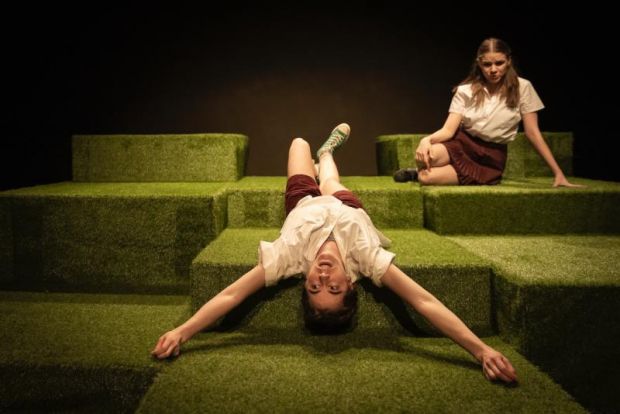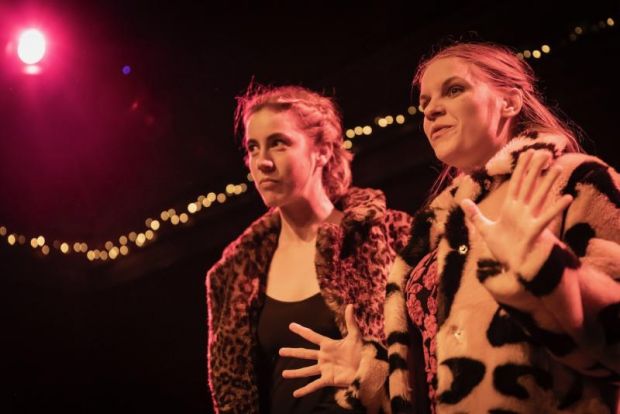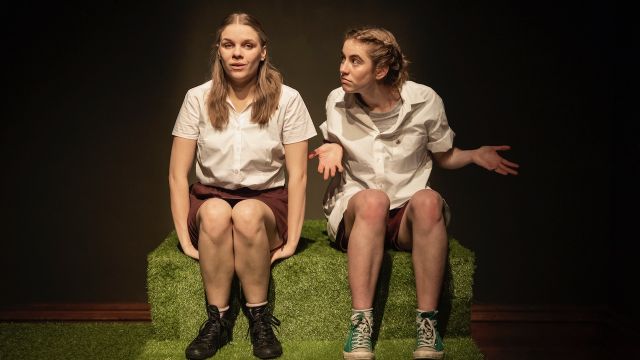Cactus
Ayesha Harris-Westman (Abbie) and Lucy Rossen (PB) are best friends in their final year of high school facing some of the usual challenges presented to teenagers on the brink of adulthood. This story is much less conventional than expected and deals with much more than the usual plots that often characterise coming of age narratives.
Madelaine Nunn’s writing style is incisive and hard-hitting. The tone focuses less on teen speak and much more on adopting a very candid and unabashed insight into the everyday concerns that face these young women. The story and the circumstances that the characters are placed in by Nunn represent a significant challenge for the performers. Some of their most intimate details are laid bare on stage and both Harris-Westman and Rossen confidently bring this to life in a sensitive and moving manner.

The friendship is cast as profound and goes well beyond needy or tempestuous exchanges. The story unfolds as an array of vignettes which capture some of the most crucial moments in their lives. These episodes often take place in somewhat crude contexts, but this gives the play both momentum and power. While typical issues such as the awkwardness of sexual awakening, bodily changes, betrayals and rebelliousness are all present in the story they are treated with surprising freshness. This, combined with the excellent handling of the material, makes the play compelling and interesting.
Rossen gives her character an exuberance and nonchalance that is immediately recognisable in her age group while all the while giving space to the genuine bond she has with her best friend. The strong sense of loyalty this yields is extremely palpable. Harris-Westman gives a very intense performance and her ability to switch from petulant teen to genuine physical and psychological suffering is often breathtaking. The play includes sequences which are defined by a journal-like account of events which effectively punctuates the play. These moments make the experiences of these young women particularly accessible and relatable to outsiders.

The set and lighting design is kept very minimal and unobtrusive which helps to keep the focus on the strength of the performers and the content and style of the text. Despite imaginative and varied use of this space the play warrants a more dynamic setting. Nonetheless, Cactus is an opportunity to see a great combination of both writing and performing talent that are clearly working in complete harmony.
Patricia Di Risio
Photographer: Darren Gill
Subscribe to our E-Newsletter, buy our latest print edition or find a Performing Arts book at Book Nook.

